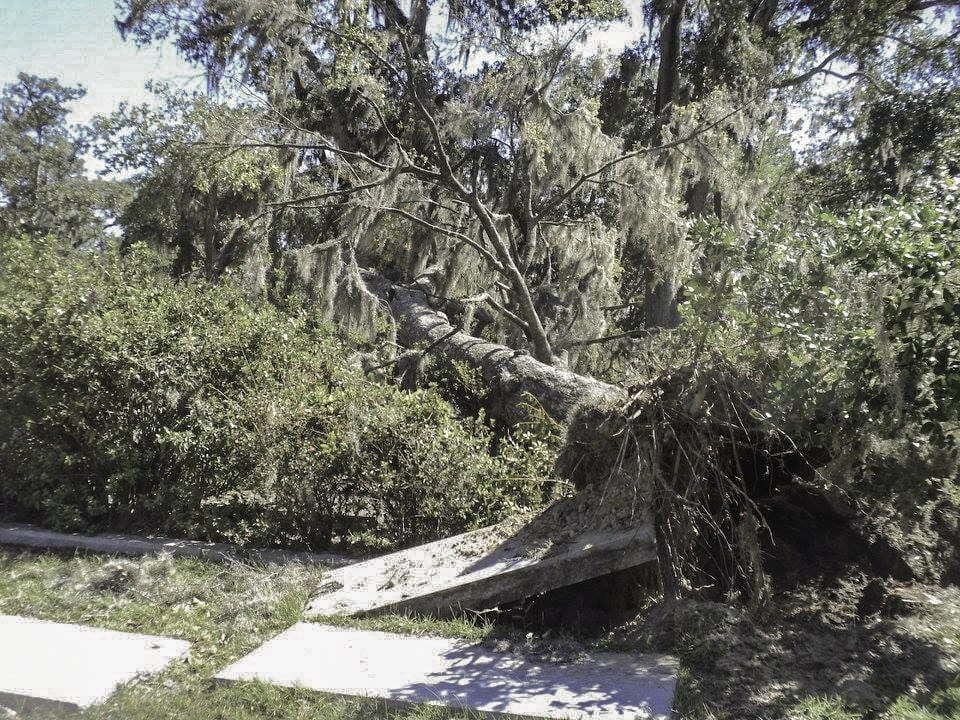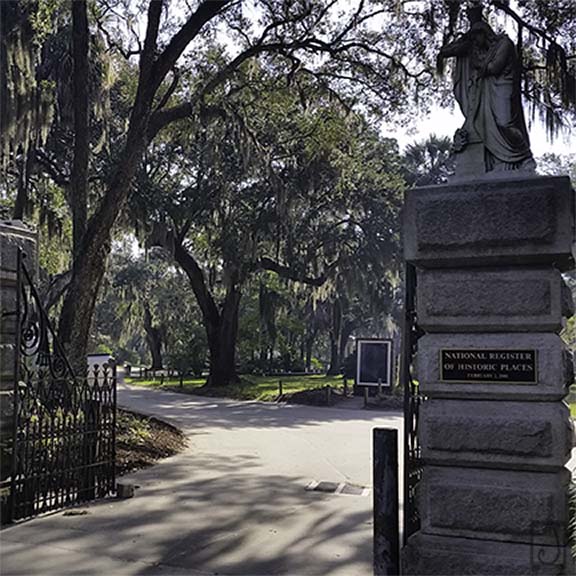by Leslie Alwiel
Here is the latest as of October 27, 2016:
It will be several weeks, possibly as many as four, before Bonaventure will reopen to the public. The problem is the density of trees in the historic section – cranes will be required to stabilize branches and tree trunks as necessary when the hazardous limbs are address, and they are in short supply. In addition, FEMA must inventory the work at each hazardous tree in order for the city to be reimbursed for the extraordinary expenses involved in the cleanup.

Hurricane Matthew Damage photo credit: Lee Maltenfort
While we all want Bonaventure open soon here is some history on the live oaks at Bonaventure – and a way you can learn more and help with restoration efforts.
While looking for a story to share about Bonaventure I ran across an article from our Newsletter Archive about The Live Oak Forest at Bonaventure Cemetery written by Jerry Flemming, the former Director of Cemeteries for the City of Savannah. The original article was published in the November/December 2003 Bonaventure Historical Society newsletter (vol. 10, no. 1).
History of Bonaventure Live Oaks
The Bonaventure Live Oaks have a fascinating history and have weathered many storms since their planting by Colonel John Mullryne in 1764. It was likely the trees planted were not saplings but rather upwards of 10 to 20 years old at the time.
“He directed the establishment of live oak trees every fifteen feet along both sides of the main corridors of the estate. Mullryne’s trees were clearly established on what is now called Mullryne Way and Bonaventure Way,” stated Mr. Flemming.

Before the storm photo credit: Leslie Alwiel
The live oak is a hearty species seen throughout the low country and from coastal Virginia to southern Texas. The Spanish Moss often associated with the live oaks is neither Spanish or moss. It is a salt-tolerant bromeliad known as Tilladsia usenoides. The combination of the trees draped with moss provide the background beauty Bonaventure is known for.
According to Mr. Flemming, “The most ferocious storm ever to strike Savannah was the Hurricane of 1804 at the beginning of century and the second worse was the Great Sea Island Hurricane at the end of the same century (1893).”
Despite other major storms, including Hurricane Matthew, the Bonaventure Oak trees, like our fair city of Savannah, have endured.
Legend has it a live oak tree grows for 100 year, lives for 100 year and dies for 100 years. And as we have seen they are as strong as they are majestic.
What Can You Do to Help?
We will be planning fundraising activities soon to help with the extensive restoration expected, for now you can download a copy of our mobile guide directly from Apple iTunes or Google Play. Proceeds will be used to fund restoration efforts.
Follow Us on Social Media for Bonaventure Updates:
Twitter: BonaventureHS
Facebook: Bonaventure Historical Society, Inc.
Instagram: Bonaventure Historical Society
Website: Bonaventure Historical Society







